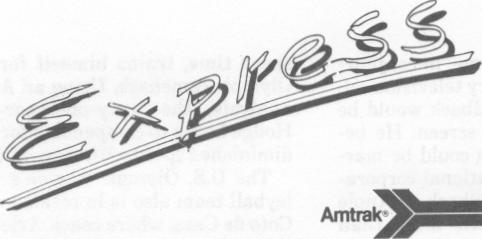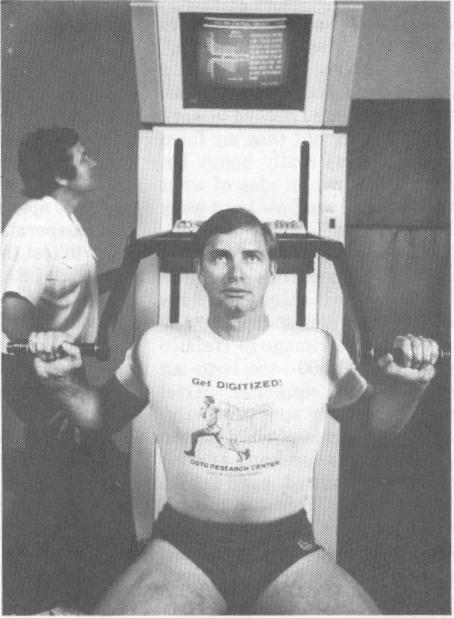| Index | Next |
![]()
July 1981
No Winnin
Through
Witchcraft Here
The highly sophisticated
Coto Research Center reflects Dr. Gideon Ariel's lifelong
fascination with the science
of athletic performance.
By Pamela King
I f Gerald Ford kept his left arm a little straighter and rotated his hips a little more, he might now have a bright green Masters jacket among his memorabilia. When Gideon Ariel analyzed Ford's golf swing, he discovered that a bowed elbow and lazy leg motion were the main factors that separated the former president from Jack Nicklaus. If Ford had had access to that information forty years ago, he might have spent his career battling Ben Hogan and Sam Snead instead of irksome Democrats and nagging reporters.
Ariel, a forty-two-year-old Israeli with doctorates in exercise science and computer science from the University of Mas
Dr. Gideon Ariel uses one of his computerized devices to gauge an athlete's strength.
sachusetts, is in the business of analyzing physical performance. He is founder and president of the Coto Research Center, a multimillion-dollar facility located in the wilds of Trabuco Canyon, about halfway between Los Angeles and San Diego.
Along with the renowned Vic Braden Tennis College, the research center is tucked into a real estate development called Coto de Caza. Braden and Ariel are kindred spirits because of their fascination with the scientific basis of athletic performance, and the rotund tennis pro helped Ariel convince Coto de Caza's developer to build the research site.
Once supplied with a couple of buildings, a running track and a tennis court, Ariel proceeded to fill the rooms with computers and exercise equipment and to modify the court and
track with specialized instruments.
The eight-month-old center is the culmination of a decade of pioneering work in the field of biomechanics. In this spacious and well-equipped locale, Ariel and his partner, Ann Penny, have expanded their research into human movement, which began in 1971 in a cramped office in Amherst, Massachusetts.
"I was frustrated that coaches were training athletes with witchcraft," says Ariel, who competed on the Israeli Olympics team in 1960 and 1964 as a shotputter and discus thrower. "It was all a lot of mumbojumbo-if the shot goes 190 feet, the coach says everything you do is right; if it goes 50 feet, everything is wrong.
"I wanted to know, `What is the velocity of the arm?' I needed a way to quantify information. I did basic research into reaction time, reflexes; I studied mechanics, engineering, physiology."
Ariel ultimately found the solutions he sought in the university's computer center; after ten thousand hours, he developed programs that enabled him to translate arms and legs and twisting hips into "x" and "y" coordinates, ready to be plugged into equations. He and Penny borrowed $5,000 to buy a computer and founded Computerized Biomechanical Analysis, Inc.; and although they have moved to Trabuco Canyon, CBA's research and development remains in Amherst.
In simplified terms, Ariel's system works this way: He projects a picture of an athlete on a screen and, with a penlike machine called a "digitizer," pinpoints the joints and marks lines between them; advancing a slow-motion film, he repeats this procedure in sequence for the athlete's entire swing or stride.
That information is banked in the computer's memory, and the instrument then compiles data on every aspect of the athlete's motion-speed, center of gravity, acceleration and deceleration, strength, timing. It is Ariel's job to interpret the data and to calculate what the athlete can do to improve.
"What I learned at the Coto Re
EXPRESS July 1981


![]()
| Index | Next |